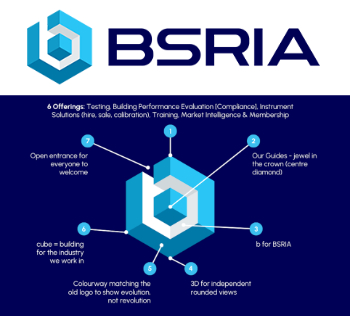Innovation in construction projects
Innovation is a wide concept that includes improvements in processes, products or services. It involves incorporating new ideas which generate changes that help solve the needs of a company and so increase its competitiveness.
The application of innovation to the construction industry is not straight forward, despite the importance of this sector in the development and growth of the wider economy. Every construction project is different, which means that construction companies have to adapt their processes and resources to suit each project. Every site is a singular prototype whose configuration changes over time. Construction works are located in different places, and involve the constant movement of personnel and machinery. In addition, the weather and other factors can prevent consultants from applying previous experience effectively.
This means that although innovative solutions to specific problems add to the overall experience and practices of a company, as innovation is undertaken on a one-off basis, it does not necessarily benefit the company as much as might be expected unless it is possible to incorporate it into the organisation's standard management processes.
Innovation needs to change from being just the application of good ideas to a process that can be managed, measured and controlled systematically. Consequently, the standardisation of innovation is very important. The key lies in considering innovation as a management process. Each part of the organisation can control and improve different aspects of innovation and integrate them into the rest of the company's processes.
A company that has a standardised management of innovation can reap significant rewards:
- Improvement in organisation of activities.
- Improvement in the company's competitiveness in the medium and long- term.
- Better integration of the company's management processes within the company's overall strategy.
- Efficient exploitation of the organisation's knowledge.
- Systematisation of new process and product knowledge.
- Client satisfaction.
There are two families of European standards that focus on the standardisation of the innovation process: The British BS 7000-1 standards and the Spanish UNE 166000 standards:
- The British standards (“BS 7000-1:2008 Design management systems: Guide to managing innovation”) are used as a guide for the development of innovative and competitive products that satisfy the future needs of users. British standards are defined by three features: their purpose is the design of products; they provide a structure for the management of innovation; and they are supported by the quality management ISO 9001 standards.
- The Spanish UNE 166000 2006 standards “R&D&i management: Terminology and definitions of R&D&i activities” (Research, Development and Innovation) consider innovation as a process that can be systematised using a model similar to that used for quality or environmental management. Its objectives are to: homogenise criteria; promote the transfer of technology; and provide instruments that enable public administrations to assess R&D&i projects. They also aim to provide companies that obtain ISO 9001 certification with an active tool that facilitates the continual improvement of their processes by means of R&D&i activities.
Innovation in the construction industry can be standardised as long as it is treated as a process. This process can be seen to consist of the following stages:
- Identification of the need and opportunity for innovation: by analysing construction methods during the planning phase, potential alternatives and innovative ideas that will help attain project and company objectives; this stage is heavily influenced by the scope, complexity and difficulty of the project, as well as market demand, business opportunities, legislation, access to new technologies, and so on.
- Selection of innovative solutions at the construction site: the decision to adopt innovative solutions depends on the objectives, benefits and competitive advantages expected by the organisation, as well as the potential to transfer innovations to other projects. The assessment of innovative alternatives must take all project and company objectives into account.
- Development of innovative solutions at the construction site: the adoption of a technological or organisational advance requires the commitment of the whole organisation, the innovation team and the wider construction site team. The company must allocate the human and material resources necessary to deliver the innovation. This stage is essential, since it involves adjusting scheduled activities to the real situation.
- Assessment: the team and the company must assess whether an innovation project's objectives have been fulfilled. All the stages of the innovation process should be considered, in addition to any related aspects.
- Transfer to future projects: in order for the results to be exploited they need to be successfully transferred to other construction projects. In other words, the innovation process terminates when it is learnt, encoded and re-applied.
The text in this article is based on an extract from CONSTRUCTION MANAGEMENT, by Eugenio Pellicer, Víctor Yepes, José M.C. Teixeira, Helder Moura and Joaquín Catala. Valencia, Porto, 2008.
The original manual is part of the Construction Managers' Library – created within the Leonardo da Vinci (LdV) project No: PL/06/B/F/PP/174014, entitled: “COMMON LEARNING OUTCOME FOR EUROPEAN MANAGERS IN CONSTRUCTION”. It is reproduced here in a modified form with the kind permission of the Chartered Institute of Building.
[edit] Related articles on Designing Buildings
- 3D printing.
- Architecture and the need for innovation
- Artificial intelligence and civil engineering.
- Artificial intelligence and surveying.
- Augmented reality in construction.
- Barriers to innovation and Construction 2025
- BIM articles.
- Building information modelling.
- Burj Khalifa.
- Construction innovation
- Cork House.
- Developing the next generation of cementitious materials.
- Innovative partnership procedure.
- Innovation – the key differentiator
- Internet of things.
- Research.
- Research and development.
- Rethinking Construction Innovation and Research: A Review of Government Policies and Practices
- Shaping the Future of Construction: Inspiring innovators redefine the industry.
- Smart buildings.
- Standardising structural elements: A platform for construction innovation.
Featured articles and news
Spring Statement 2025 with reactions from industry
Confirming previously announced funding, and welfare changes amid adjusted growth forecast.
Scottish Government responds to Grenfell report
As fund for unsafe cladding assessments is launched.
CLC and BSR process map for HRB approvals
One of the initial outputs of their weekly BSR meetings.
Architects Academy at an insulation manufacturing facility
Programme of technical engagement for aspiring designers.
Building Safety Levy technical consultation response
Details of the planned levy now due in 2026.
Great British Energy install solar on school and NHS sites
200 schools and 200 NHS sites to get solar systems, as first project of the newly formed government initiative.
600 million for 60,000 more skilled construction workers
Announced by Treasury ahead of the Spring Statement.
The restoration of the novelist’s birthplace in Eastwood.
Life Critical Fire Safety External Wall System LCFS EWS
Breaking down what is meant by this now often used term.
PAC report on the Remediation of Dangerous Cladding
Recommendations on workforce, transparency, support, insurance, funding, fraud and mismanagement.
New towns, expanded settlements and housing delivery
Modular inquiry asks if new towns and expanded settlements are an effective means of delivering housing.
Building Engineering Business Survey Q1 2025
Survey shows growth remains flat as skill shortages and volatile pricing persist.
Construction contract awards remain buoyant
Infrastructure up but residential struggles.
Warm Homes Plan and existing energy bill support policies
Breaking down what existing policies are and what they do.
A dynamic brand built for impact stitched into BSRIA’s building fabric.






















Comments
We found the article very interesting. We think the innovations in the construction industry is important and necessary, as well as you wrote a very fascinating post about it. We also work on the matter, so please feel to check out our article and leave some feedback. https://geniebelt.com/blog/construction-expert-roundup